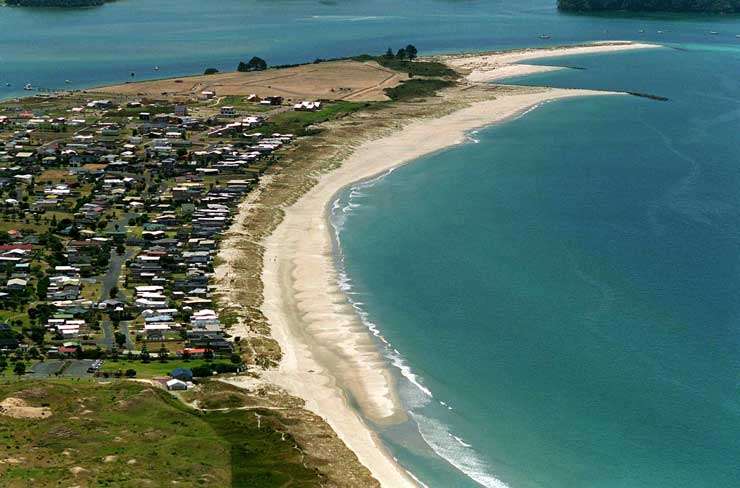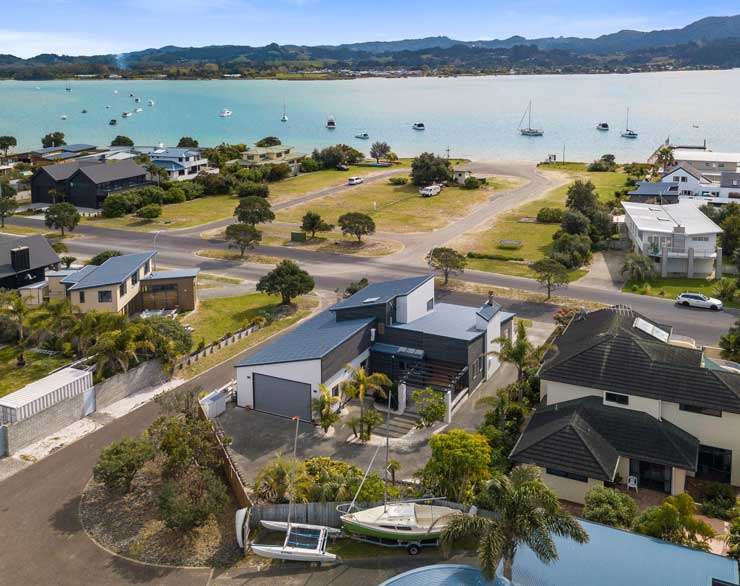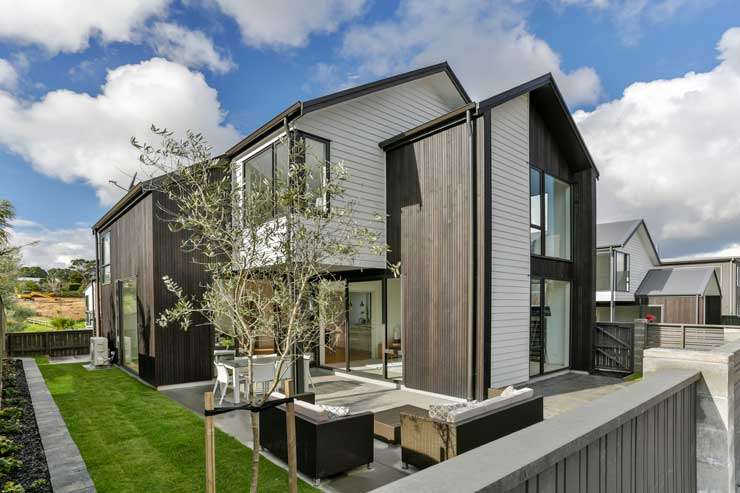Twenty years of rising house prices in Auckland have benefited some suburbs more than others, reinforcing the adage that timing is all important when it comes to buying and selling in the property market.
The median sale price of all properties in the city at the close of 1999 was $235,000. By 2019 the median sale price had risen 253 percent to $830,500.
However, 10 suburbs in the city saw property prices jump more than 500 percent, and a further 46 saw rises in their median sale of between 400 and 500 percent.
Silverdale, in Auckland's northern fringe, saw the biggest leap, at 711 percent, but the increase can be put down to the fact that the suburb was mostly rural in 1999 with few sales, and had yet to be transformed into a thriving residential suburb.
Start your property search
The second biggest increase was in Omaha. In 1999, properties in the popular beach location were typically selling for $272,500. By 2019, the median sale price hit $1.81 million - a 664 percent increase.
Also performing strong were Wai O Taiki Bay (up 618 percent to $1.4 million); Point Wells (up 559 percent to $1.397 million); Point England (up 559 percent to $864,750); Ponsonby (up 547 percent to $1.75 million); Flat Bush (up 524 percent to $1.162 million); Waitoki (up 514 percent to $1.8 million); Point Chevalier (up 501 percent to $1.344 million); and Oneroa (up 500 percent to $1.15 million).
OneRoof editor Owen Vaughan says the rise in Omaha's median sale price can be attributed to the location's popularity with wealthy Aucklanders. "Omaha's proximity to Auckland, pristine beach and relatively safe waters have essentially turned it into the Hamptons for rich boomers looking to escape for the weekend," he says.
"Baches are luxury homes in their own right - a far cry from the modest cabins and caravans that were there back in the 1980s. The highest sale price in the suburb this year was $7.225 million."
Bayleys agent Paul Elsden says that recent record sales for beach front will continue. “As at October, there are only eight pure waterfront sites left to build on in the newer southern end. In 2000 they were $500,000, now they’re in the $3 million to $4 million range, if you can get one," he says.
“Unlike Auckland, properties are selling this year for on average 22 percent above CV in the southern end of Omaha, and on average 18 percent above CV in the older northern end - although it is important to note that note every property sells at those levels.
"With low interest rates, people who don’t want to sell, they can afford to hold on to their holiday homes.”
Fellow Bayleys agent Kellie Bissett says that Point Wells, the headland beside the Omaha River and across Whangateau Harbour from Omaha, took off when the new subdivision opened up. She’d bought there in 2009, when she would wake up to the sounds of cows mooing in the paddocks around. Locals love it because it is still old school village, without proper footpaths where tractors towing boats are the main traffic jam. The harbour is famous for its fishing, kayaking and paddleboarding, orca come around the point and there’s an old-fashioned hall, tennis court and bowling green.
“Everything is two minutes from the water. There’s a lot of generational property changing hands now,” she says. But with only five or six waterfront properties coming on the market each year, demand has pushed prices up. From a sleepy retirement village, Point Wells now has at least 30 kids waiting for the school bus to Matakana, with many residents prepared to do the commute to Auckland to get the traditional lifestyle for their families.
“A knockdown 1950s house on a waterfront section is $1.9 million,” Bissett says. “Ten years ago a four bed family home would sell for $550,000 to $600,000.”
The big jumps in the median sale prices of Wai O Taiki Bay and Point England reflect another major change for Auckland in the last 20 years - the regeneration of former state housing areas.
"Wai O Taiki Bay and Point England had suffered from poor housing stock and social deprivation, but since 2009, the Tamaki Regeneration Programme - now Kāinga Ora - delivered on the promise of improved housing in a mixed and vibrant community."

Then: Omaha in the 1990s - prices had yet to take off.

Now: Omaha is now home to large luxury holiday homes.
Wai O Taiki Bay is no longer home to state housing. The homes there are entirely new, architect-designed and aimed at the upper end of the market. Point England is still a mix of new and older homes but the suburb's large sections and waterfront location has turbo-charged its market, Vaughan says.
Barfoot & Thompson agent Kelly Midwood says that October’s record sale of $3.1 million for a luxurious five bedroom home looking across to Half Moon Bay property is just the beginning for Wai O Taiki Bay.
Prices in the five years old development are still in effect wholesale, as new owners are buying directly from the developer, so there will be even more growth in the future, she says.
“They’re still building, so the secondary market hasn’t started yet, we still have another ten years,” she says. “The next step out in Point England and Panmure has just started, as streets of older homes continue to be replaces with newer style homes.”
She says many of the buyers have moved across from the Bays, Glendowie and Stonefields because they can get more for their money.
Marcel Van Drongelen, of Auckland developers Creating Communities, has been part of the regeneration of northern Glen Innes since 2013. The company has completed the last three of some 80 new homes, with buyers loving the access to coast, walkways and reserves only 20 minutes from the city.
“You get an eastern bays lifestyle, for a price tag about $1 million less, only two stops by train from Britomart,” he says. “People are selling houses in Glendowie or St Heliers for $3 million to $4 million, and getting a brand new house for half that. They’re downsizing, without having to downsize the house, and you get a brand new house with a 10 year guarantee.”
The OneRoof data also shows there were 28 suburbs that saw prices increase more than $1 million between 1999 and 2019. The difference in median sale price was biggest in Whitford and St Marys Bay - $1.665 million and $1.627 million respectively.
In 1999, properties were cheapest in Otara ($120,500), Clendon Park ($134,000) and Clover Park ($150,000), while the median sale price was highest in St Marys Bay ($640,000), Whitford ($635,000) and Herne Bay ($570,000).

The houses in Wai O Taiki Bay are modern and aimed at the middle to upper end of the market.
In 2019, the lowest median sale price could be found in Grafton ($352,000), Manukau ($488,500) and Auckland Central ($499,000) - all suburbs where apartments make up the majority of the housing stock. Auckland's highest median sale prices for 2019 were in Omaha, St Marys Bay ($2.267 million) and Whitford ($2.3 million).
Vaughan said: "The median sale price is a good gauge of what properties were listed and selling at a fixed period in time. Because it is prone to fluctuation, it isn't necessarily a true reflection of the value of every home in a suburb.
"For example, the median sale price of houses selling in New Zealand's most expensive suburb, Herne Bay, in 2019 is $1.555 million while the median value of the suburb is $2.432 million. The difference can be explained by the fact that what was listed and sold in Herne Bay during 2019 was generally at a price point almost $1 million lower than what the majority of houses in the suburb are valued at."









